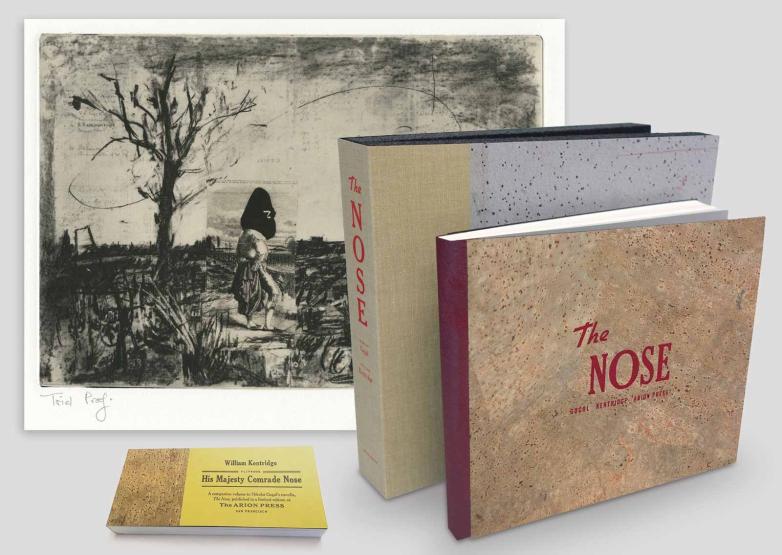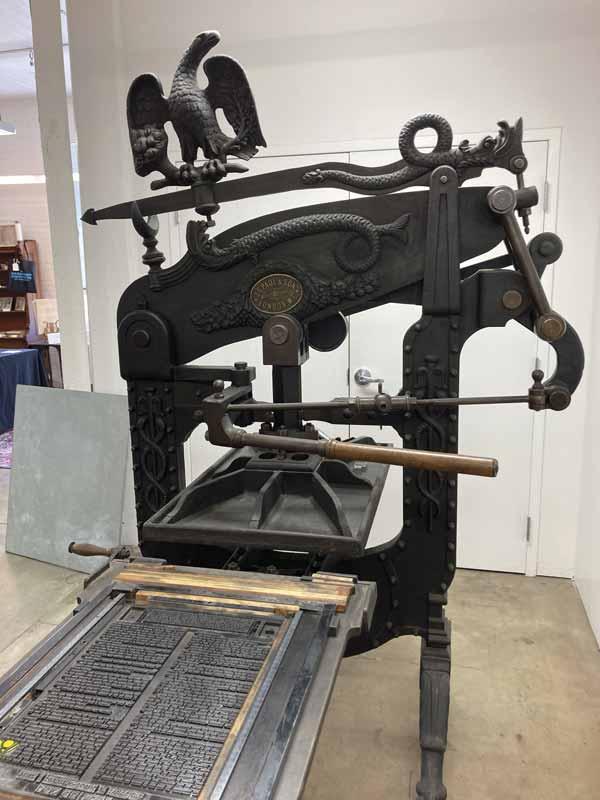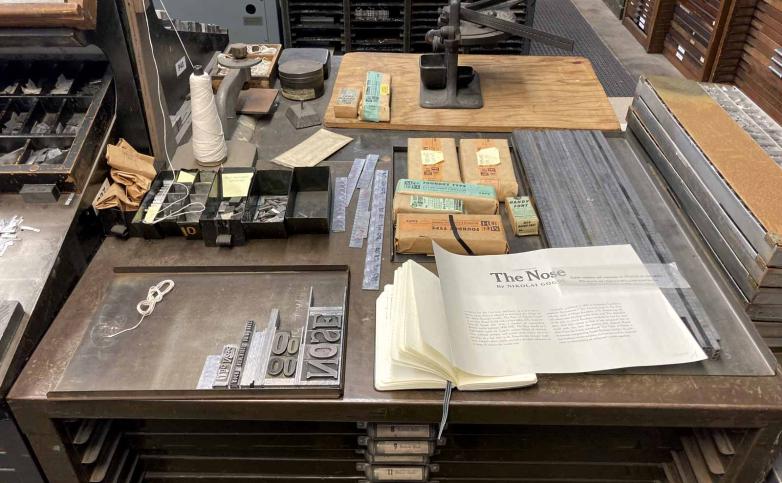A standout of the original Arion operation is the 1979 edition of Herman Melville’s Moby-Dick, or The Whale, including 100 wood engravings by Barry Moser, sold as a folio edition printed on handmade paper. Since Arion’s founding, the press has published 118 artist books by authors as varied as Edward Albee, Shirley Jackson, George Orwell, Gertrude Stein, Oscar Wilde, and Virginia Woolf with original work by visual artists like Enrique Chagoya, Jasper Johns, Sol Lewitt, Julie Mehretu, Laurie Simmons, Wayne Thiebaud, and Kara Walker.
In 1989, Hoyem acquired the Mackenzie & Harris foundry and its historic typeface collection (the largest outside the Smithsonian), folding the operation into Arion’s workshop under the name M & H Type. Then in 2000, an umbrella nonprofit organization called the Grabhorn Institute was established to help maintain and fund Arion’s bookmaking facilities, educational programming, and apprenticeship program. After losing the lease to its original location during the dot-com boom, this mini empire devoted to traditional bookmaking moved to its current location in the Presidio in 2001.
Three years ago, when Hoyem retired, the Arion board hired former Counterpoint publisher Rolph Blythe as director, a move perhaps toward more commercial interests. In late 2020, Susie Bright was named editor-at-large, which also signaled interesting things afoot; Bright is the author of several books, including the memoir, Big Sex, Little Death, and creator of the Audible podcast In Bed with Susie Bright.
Under their leadership, revitalization has already begun. Historically, most Arion books featured a classic or public-domain text paired with new work by a major artist. “Over the past year we have worked to move the press forward,” Blythe said. “One example of this is our upcoming project with Margaret Atwood, who wrote a new piece specifically for Arion.” Atwood’s short story, a riff on Tennyson’s Le Morte d’Arthur, will be illustrated by the visual artist and novelist Audrey Niffenegger. Other forthcoming books include an edition of musical icon Patti Smith’s 1992 memoir, Woolgathering, with artwork by composer/sound artist Christian Marclay, and a new version of Nikolai Gogol’s 1836 novella, The Nose, with drawings by animation artist William Kentridge.
Unlike digital or offset printing, every book Arion creates has its pages cast, set, printed, and bound by hand—all in one single facility. Arion’s foundry has updated its antique “hot type” machinery with a digital interface, allowing pages to be transmitted from a computer directly to the nineteenth-century Monotype caster. This process still casts individual letters, but unlike the traditional system that relies on a punched paper tape for its input, text can be edited in advance rather than having to recast to fix mistakes.
“Everybody’s experience working with these books is so tactile; it’s a very intimate process,” Blythe said. However, Arion’s editions are also different from most letterpress books, as each project represents a unique collaboration between fine artist and author or text, with print runs typically ranging from 250 to 400 copies.


















